HMS Queen Elizabeth: Britain's flagship aircraft carrier - from conception to deployment
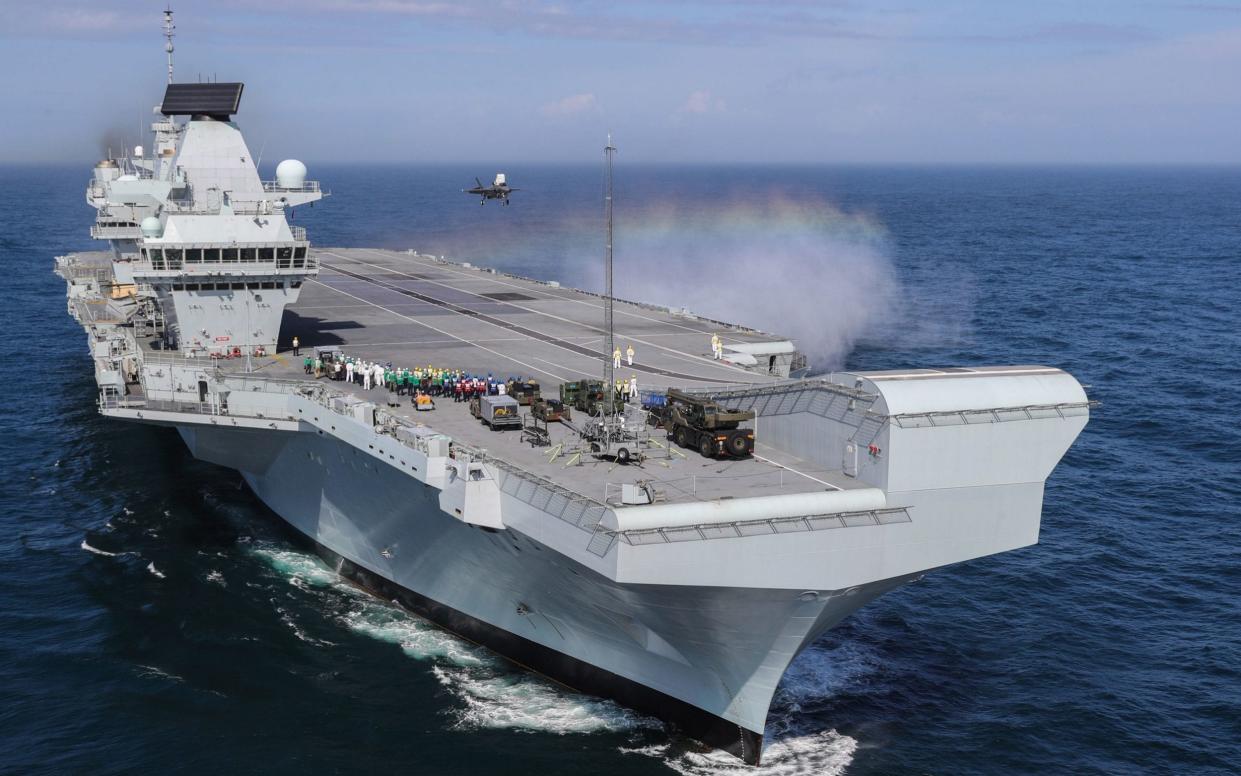
- Oops!Something went wrong.Please try again later.
When the decision was first made under the Labour Government to build two aircraft carriers to show the full maritime strength of the United Kingdom, it was welcomed by many as a move that would garner new diplomatic links around the world, while improving the nation’s security.
However, what followed from the publication of the 1998 Strategic Defence Review, where the project had its genesis, was nothing short of a bloodbath. There ensued infighting within government and businesses bidding for the work, acrimony over escalating costs, and year after year of delay.
Lord West, the former first sealord, told The Telegraph: “It was pretty blood stained. It was bloodstained because there were people who were adamant that we didn't need these things, and that the defence budget couldn't afford them.”
In 2003, the Ministry of Defence, headed up by Geoff Hoon, agreed a formal alliance of BAE Systems and Thales would build the carriers, with Mr Hoon adamant that the total cost for both would be £3 billion and be ready around 2012.
Yet more than twenty years after the idea was conceived and double the estimated price, HMS Queen Elizabeth set sail today from Portsmouth on her maiden voyage as part of the UK Carrier Strike Group Deployment, the biggest deployment of UK naval firepower since the Falklands War.
Weighing 65,000 tonnes she will sail through the Mediterranean, Arabian and South China Seas, as well as the Indian and Pacific Oceans, in a trip that will cover 26,000 nautical miles and visit a total of 40 nations in a period of seven months.
Ben Wallace, the Defence Secretary, told The Telegraph that Saturday’s deployment was “a milestone in the UK’s capabilities”.
“The world is a much more insecure and anxious place than it was 20 years ago and it is our duty to join with other like minded states to uphold the values we share and to promote British prosperity and partnership,” he said.
Former Prime Minister, Tony Blair, told The Telegraph: “Twenty three years after my Government’s Strategic Defence Review called for two large aircraft carriers, I’m very proud to see HMS Queen Elizabeth undertake her maiden voyage.
"My sense now, even more so than in 1998, is that the UK needs the capability to project its strength around the world in a dynamic, impactful and highly mobile way. Aircraft carriers remain vital in this regard.”
The Royal Cut
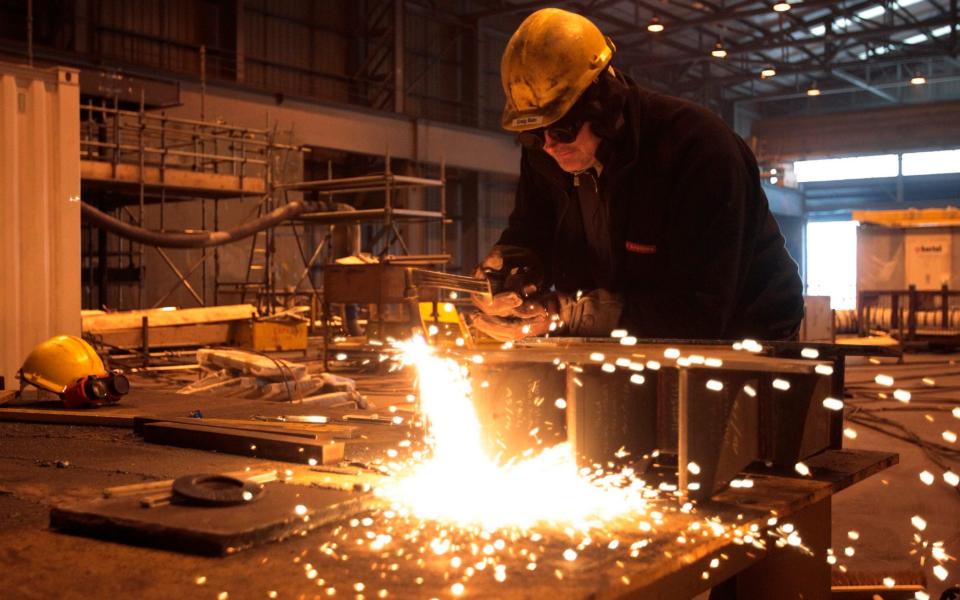
In 2009 Her Royal Highness The Princess Royal marked the beginning of the construction work of HMS Queen Elizabeth by ceremonially cutting the first piece of steel for the hull of the warship.
Princess Anne pushed the button that instructed the laser to slice through the steel at Govan Shipbuilders on the River Clyde. This set in motion welders at shipyards in Govan and Portsmouth cutting metal to the most precise of measurements in order to fit them together in Rosyth.
Building a warship
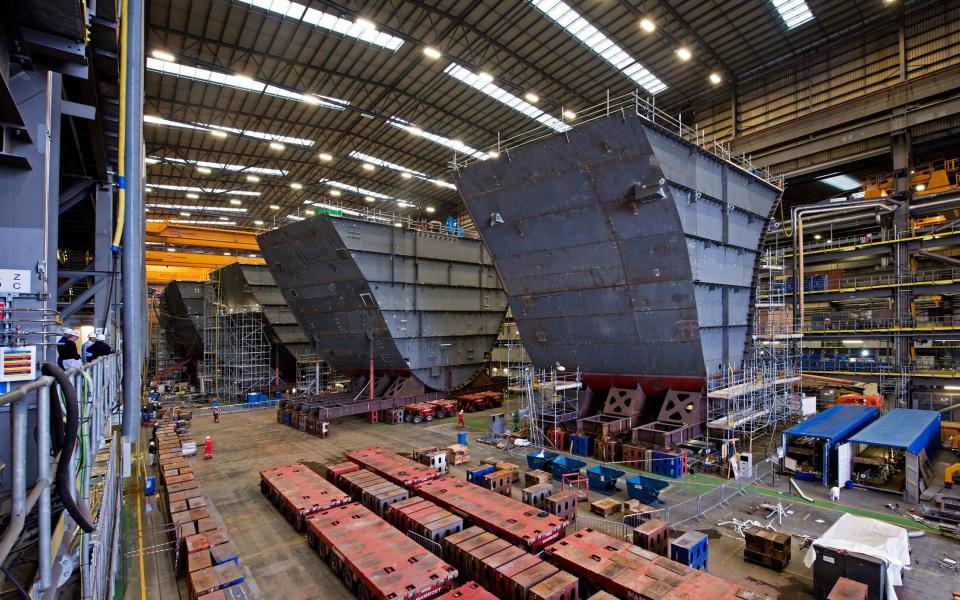
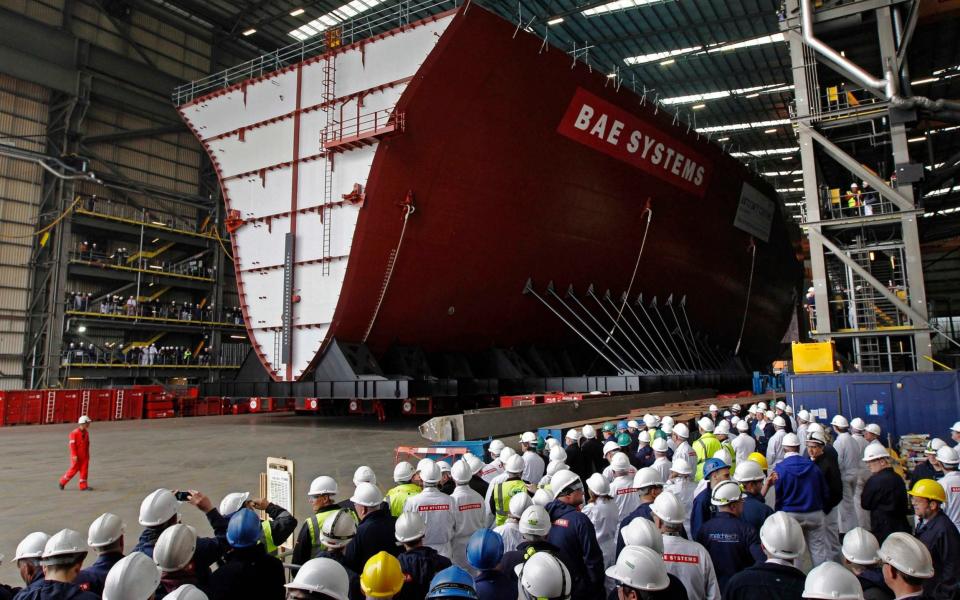
The aircraft carrier was built piece by piece in six different shipyards across the UK, including Tyne, Rosyth and Appledore, before they were brought together to be assembled in the dry dock in Rosyth.
Lord West said it was “an amazing feat of British engineering. To actually build all the bits all over the place, bring them together, fit them together where millimetres of error would be a problem, and to have them fit together almost perfectly, is incredible”.
The largest section of the ship weighed 11,000 tonnes alone, which is staggering when compared to the fact a Type 45 destroyer weighs 8,500 tonnes.
Building the largest warship to ever enter service with the Royal Navy employed 10,000 people at 100 firms all over the UK.
Smash the whisky
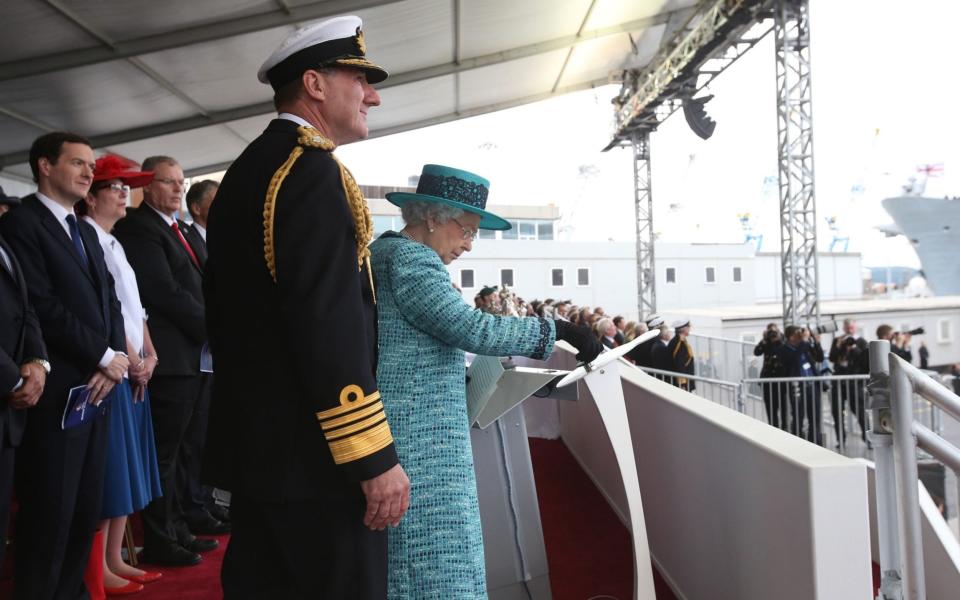
In July 2014 Queen Elizabeth travelled to Rosyth to lead the ship’s official naming ceremony, which saw her press a button which smashed a bottle of Islay malt whisky on the vessel’s bow. It was only the second time in the Royal Navy’s history that whisky has been used, with such events normally marked with a bottle of champagne broken onto the hull.
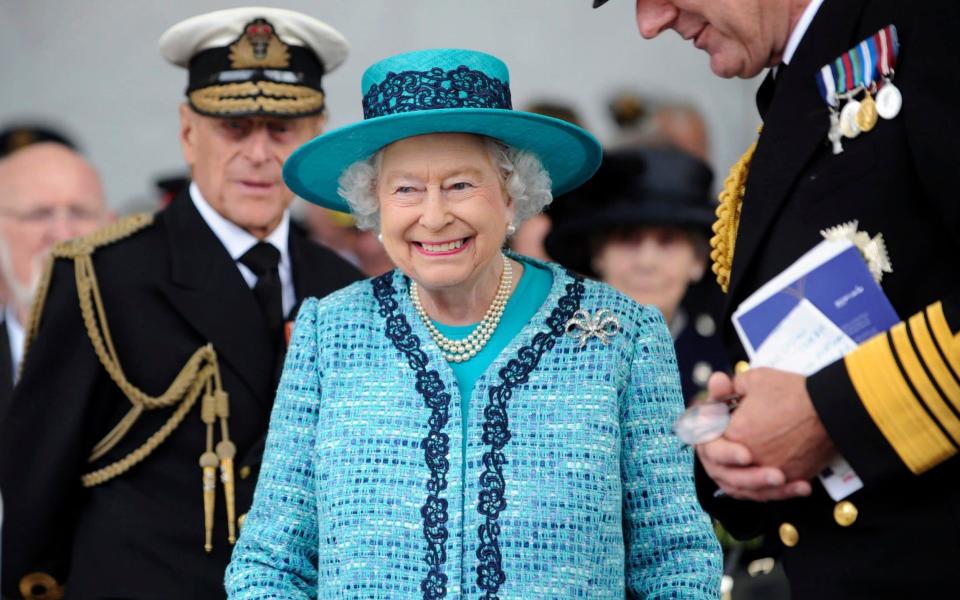
In an address to the crowd, Her Majesty, who was joined by the Duke of Edinburgh, said: "In sponsoring this new aircraft carrier, I believe the Queen Elizabeth will be a source of inspiration and pride for us all.
"May God bless her and all who sail in her."
Jets on the horizon
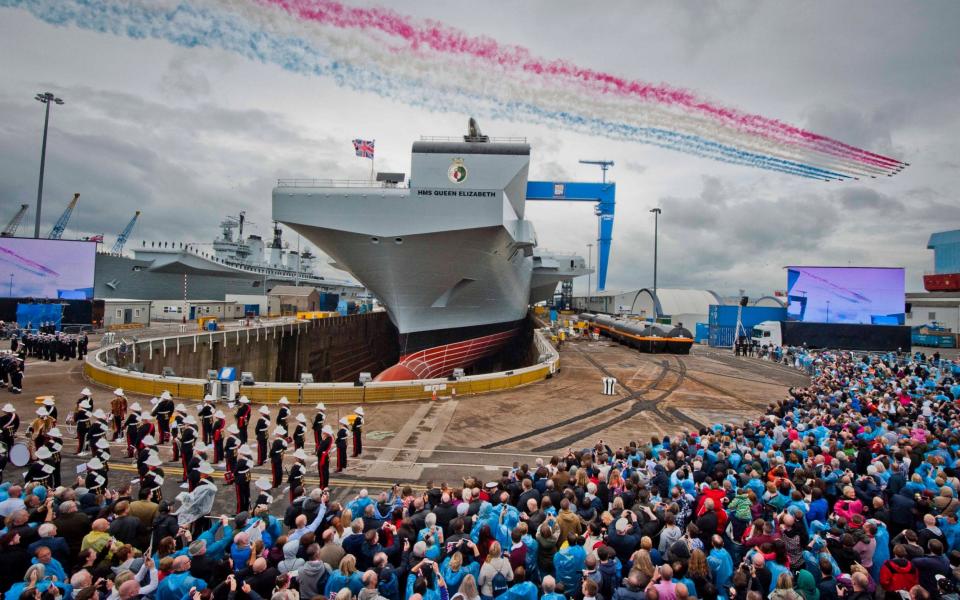
As part of the naming ceremony, the Red Arrows performed a flypast, which was followed by a procession of three generations of Royal Navy aircraft, as well as a historic 1950s de Havilland Sea Vixen fighter.
Leaving base
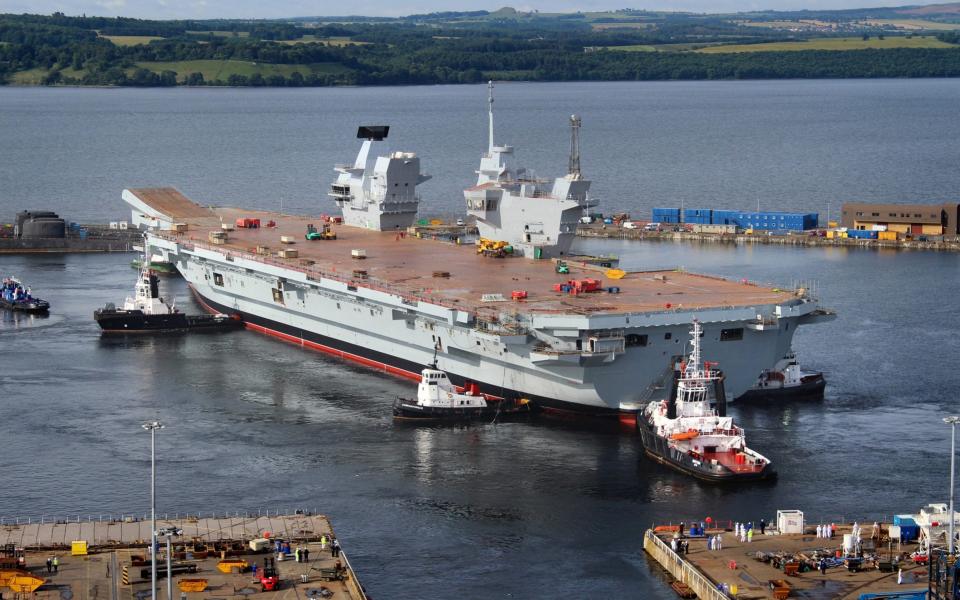
A few weeks after the naming ceremony HMS Queen Elizabeth was successfully floated out of dry dock on July 17 at 3 in the morning. The dry dock in Rosyth was flooded for the first time earlier that week to allow the aircraft carrier to float. It took three hours to maneuver her out of the dock, with just two metres clearance at either side, before she was berthed alongside a nearby jetty.
All aboard
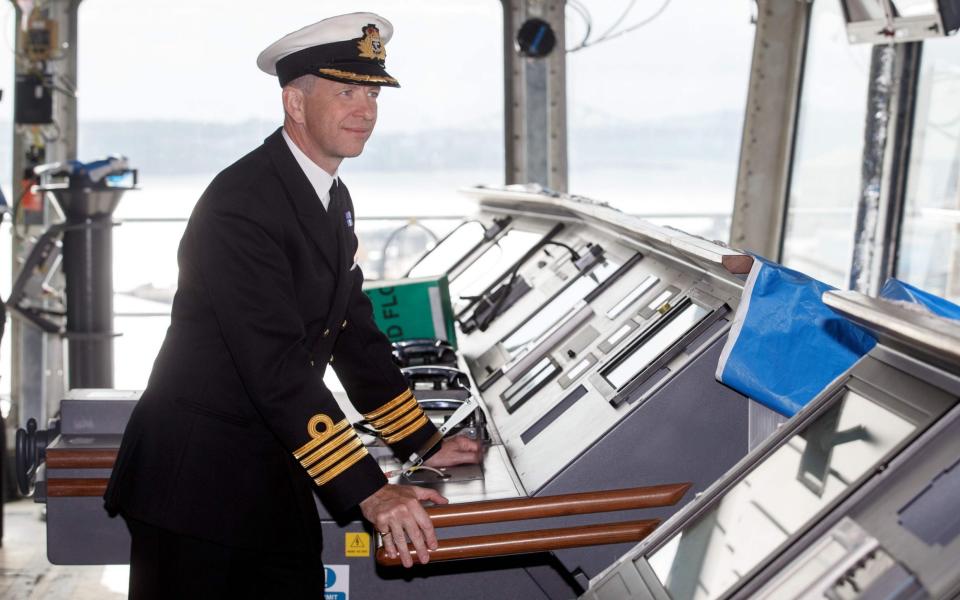
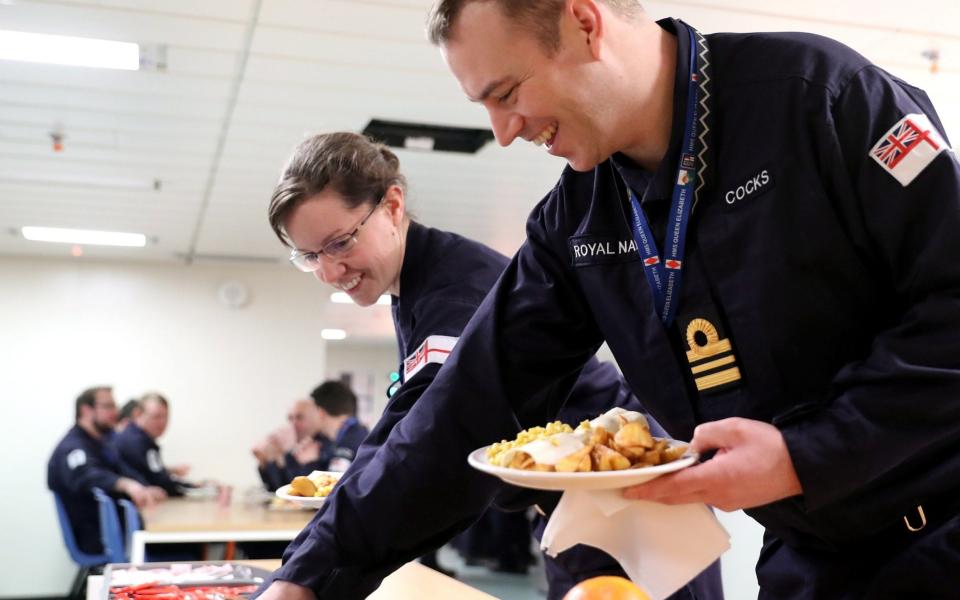
The first sailors moved aboard in May 2016, with the fitting out having been completed at the end of the year prior.
First sea trials
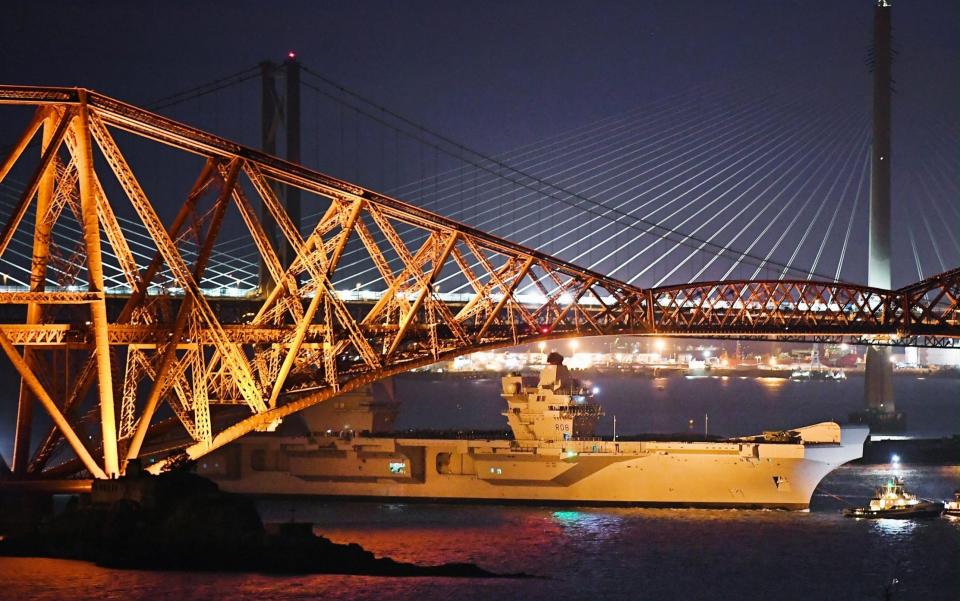
In June 2017 she left her home port of Rosyth for the first time to complete sea trials. It took four hours to move her from the basin into the Forth, before she then sailed under the Forth bridges into the estuary. In order to test her speed, manoeuvrability, power and propulsion, she sailed into the North Sea for six weeks of trials.
Former First Sea Lord Admiral Sir Philip Jones, said at the time: “This is a hugely significant moment for the Royal Navy, for all our Armed Forces – and for our island nation. Once in service, Queen Elizabeth will be the largest aircraft carrier in the world outside the United States.”
First deck landing
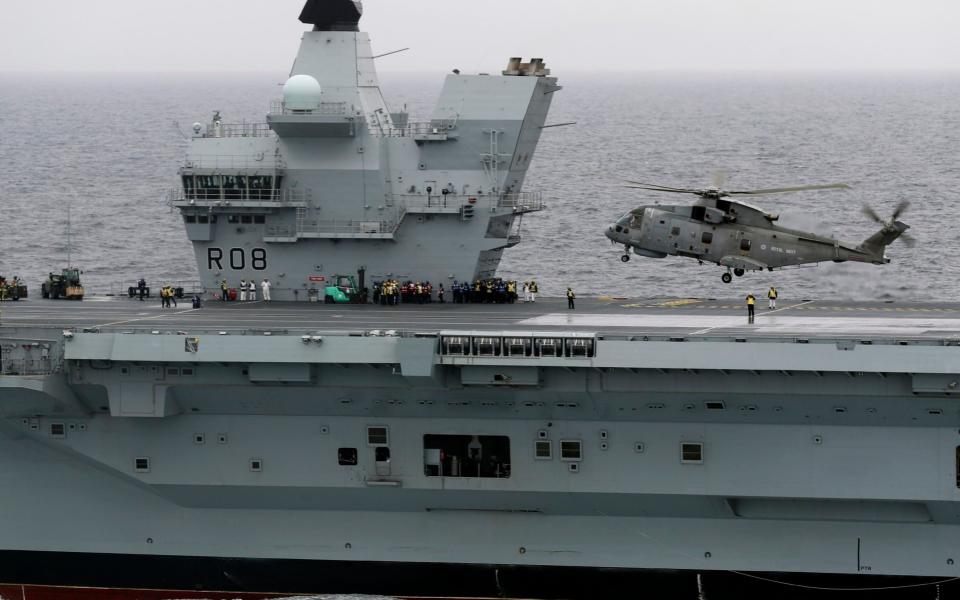
In April 2017 a Merlin helicopter became the first aircraft to ever land on the carrier. The 4-tonne Merlin, from Culdrose in Cornwall was from 820 Naval Air Squadron, had a four-acre flight deck to land on.
It was flown by a 26-year-old pilot, Lieutenant Luke Wraith, who said at the time he was “nervous” knowing that “every other pilot in the Navy would watch the footage and critique it”.
First arrival in Portsmouth
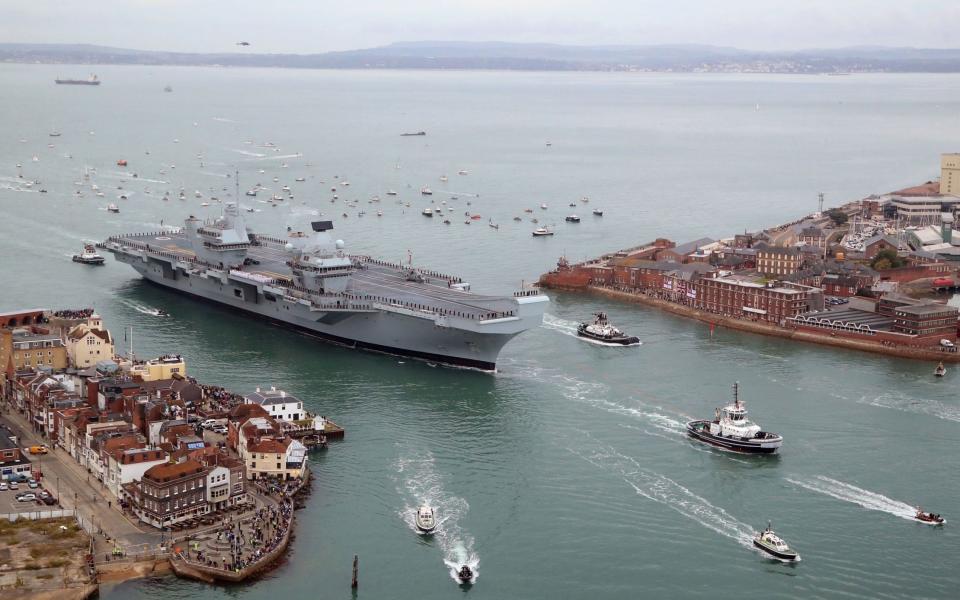
With the Portsmouth seafront flanked by thousands of wellwishers the aircraft carrier made her debut into her home port of Portsmouth on 16 August, 2017. While sailors lined the flight deck as she passed Portsmouth's Round Tower, a flypast from the Fleet Air Arm, including Wildcat and Merlin helicopters and Hawk jets also took place.
The Defence Secretary at the time, Sir Michael Fallon, said: "Today we welcome our mighty new warship, HMS Queen Elizabeth to her home for the very first time. She is Britain's statement to the world: a demonstration of British military power and our commitment to a bigger global role.”
He added that when the ship entered service “she will help keep Britain safe at a time of increased threats, able to fill multiple roles from providing air power anywhere at any time to fight future campaigns, supporting allies or delivering humanitarian aid”.
Flying the flag
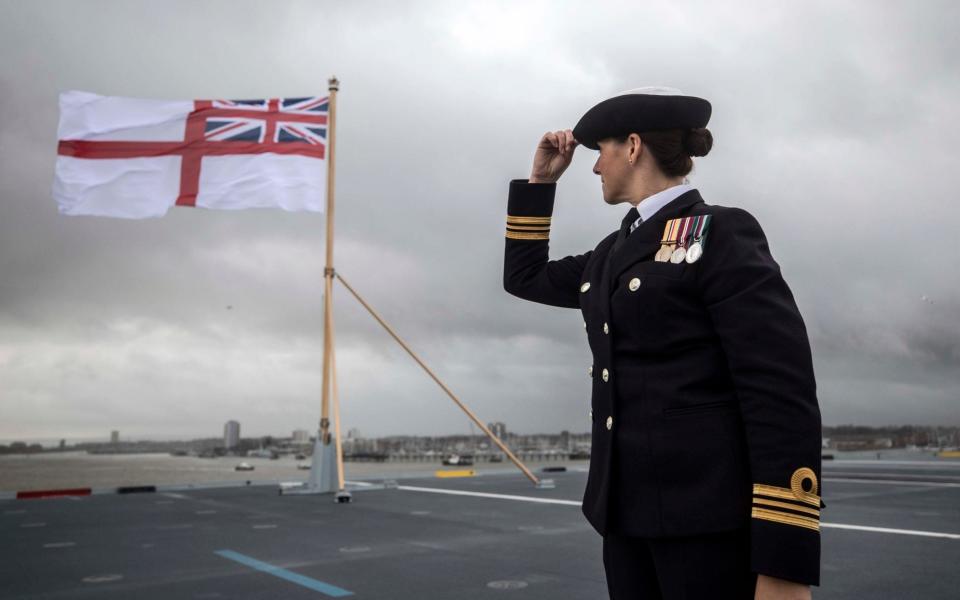
On December 7, 2017, the Queen and Princess Anne attending the commissioning ceremony of the aircraft carrier in Portsmouth. For the first time the Ensign flag was hoisted at the stern while a specially installed lift raised them to the hangar.
Speaking at the Commissioning, the Queen said: “As the daughter, wife and mother of naval officers, I recognise the unique demands our nation asks of you.
“I will always value my special link with HMS Queen Elizabeth, her ship’s company and their families.”
Arrival into New York City
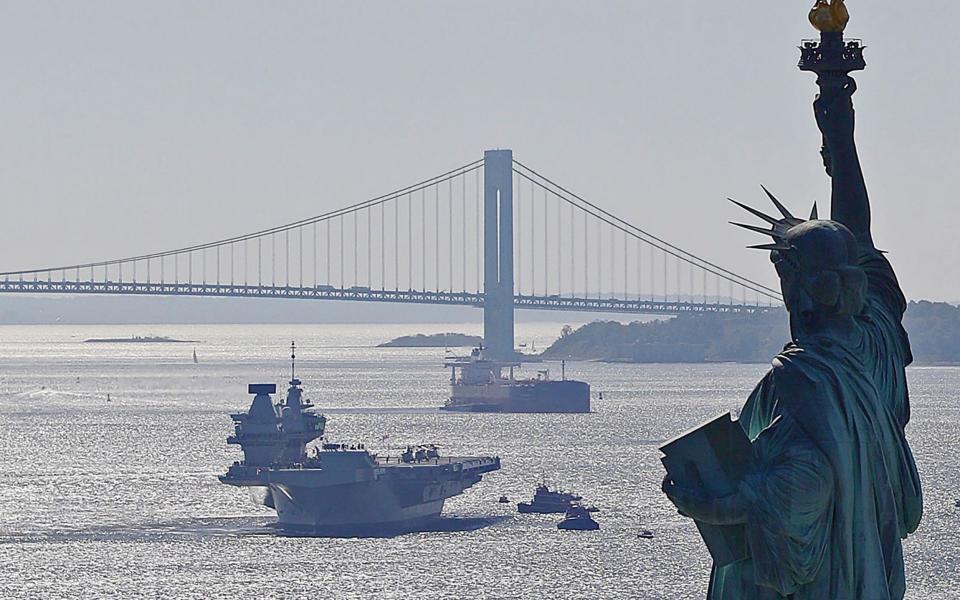
In October 2018 HMS Queen Elizabeth arrived in New York, where it anchored two miles from Manhattan in the Hudson River.
First flight trials with F35s
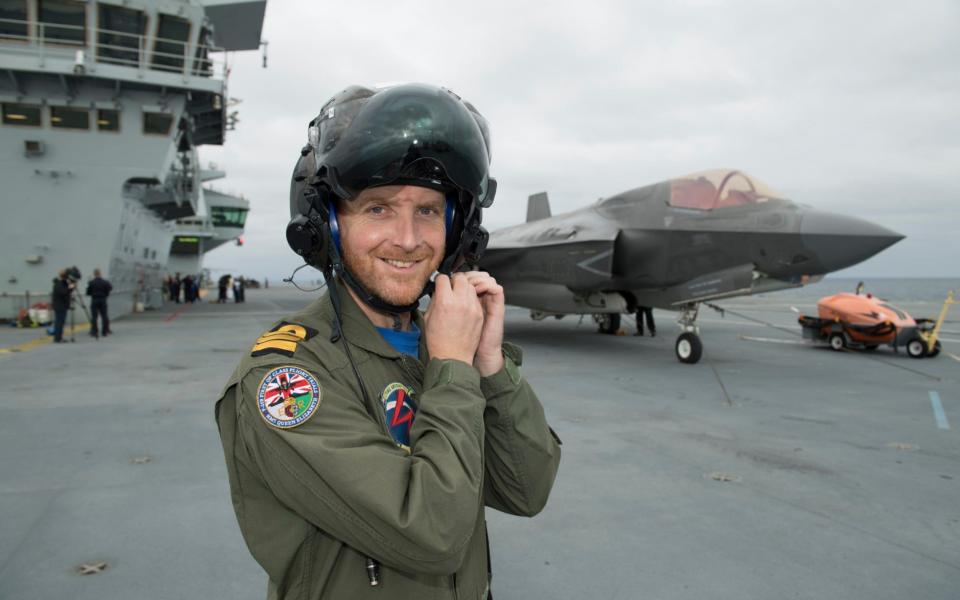
That same month flight trials were conducted off the east coast of America. During the trials the first shipborne rolling vertical landing took place, where the F35B Lightning II fighter jet approached the ship from behind at speed, before using thrust from its nozzle and lift created by air over the wings to touch down. Previously, jets conducted only vertical landings, where they hovered by the side of the ship before moving sideways over the deck to touch down.
First night flights
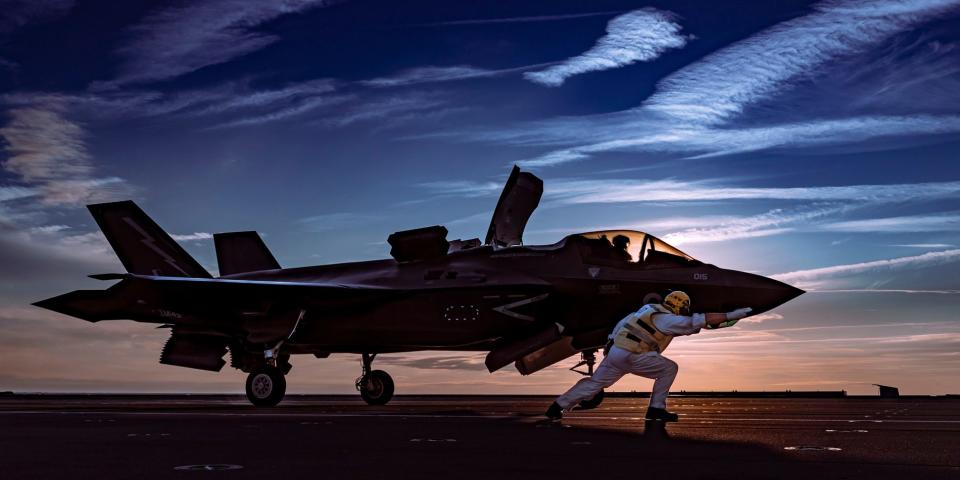
Another milestone was met that month when the F-35 Lightning jets completed their first night-time landings. Night-vision was tested with and without, with pilots initially flying in using only ambient light and the lights on the carrier’s deck. They later conducted landings using the night-vision capability in their helmets.
Return to Rosyth
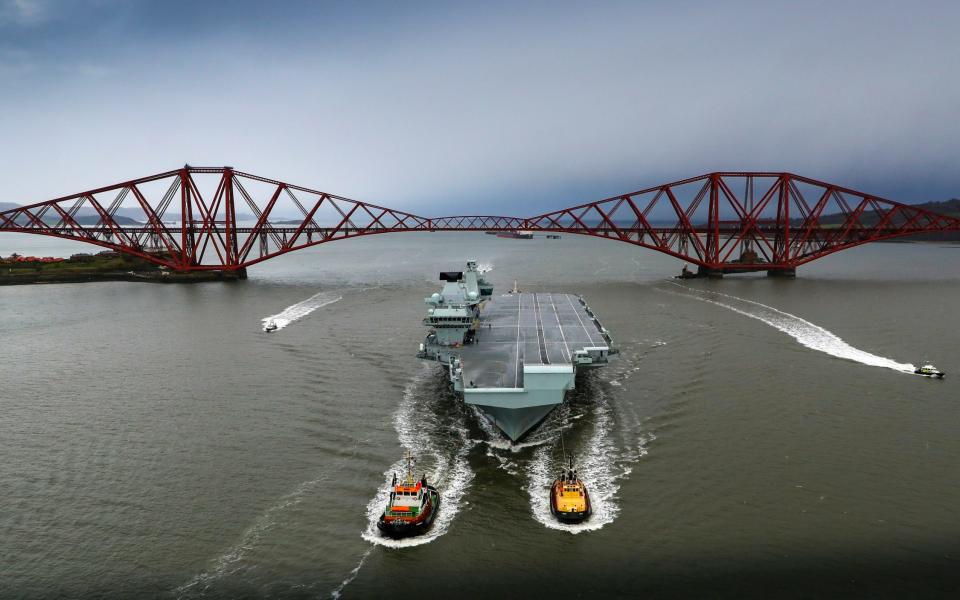
In April 2019 the carrier returned to Rosyth, sailing under the iconic Forth bridges, for planned maintenance. As she sailed back into Scottish waters, her Commanding Officer, Captain Nick Cook-Priest said: “A lot of water has already passed under our keel since we left Rosyth in 2017.
“Our return here is yet another first for HMS Queen Elizabeth and another important step on her journey as Britain generates a big deck Carrier Strike capability.”. The mandatory inspection, allowing the chance for any defects to be rectified and marine growth removed.
A show of force
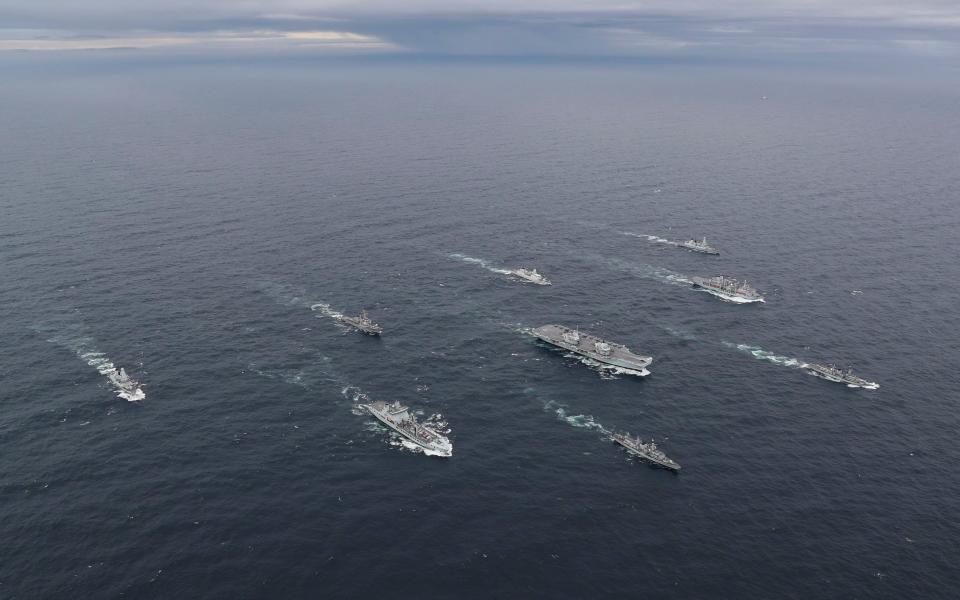
In October last year the Royal Navy's Carrier Strike Group formed up for the first time with HMS Queen Elizabeth at the centre. She was joined by eight other ships, 15 fighter jets and 3,000 military personnel from the UK, US and Dutch forces.
We are ready
In January of this year the Ministry of Defence confirmed that the carrier strike group had achieved initial operating capability. The announcement meant that fighters, radars, air defense systems, pilots and crew members were now deemed officially ready for deployment.
Jeremy Quin, defence procurement minister, said: "This is a hugely significant milestone for HMS Queen Elizabeth, the Royal Navy and the whole country.
"This achievement is a testament to the determination of our service personnel and industry workforce who have delivered this first-rate military capability, a capability held by only a handful of nations.
"I wish the entire Carrier Strike Group well ahead of their first operational deployment this year."

